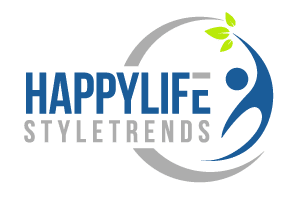Think of your customer responsibility matrix like a map. As your organization grows or changes direction, the map needs to keep up or risk sending everyone the wrong way. It’s not a “set it and forget it” kind of document—it’s a living framework that should adapt to your environment and compliance demands.
Scheduled Refreshes After Organizational or Process Changes
If your company restructures or shifts its internal workflows, your customer responsibility matrix needs to catch up—fast. New reporting lines, project scopes, or business units often bring fresh accountability gaps. These shifts might seem minor at first, but they can create major blind spots if the matrix doesn’t evolve with them. An outdated CRM can result in duplicated tasks, unclear ownership, or worse—complete lapses in security oversight.
Process changes usually mean you’re aiming to move faster or more efficiently, but without updating who owns what, it’s like handing out new tools without telling anyone how or when to use them. If you’ve adopted a new operations framework, adjusted your internal documentation procedures, or added cross-functional teams, the CRM should reflect those new realities. The customer responsibility matrix is only as reliable as its last refresh, and in dynamic industries, that window of relevance closes quickly.
Post-Audit Updates to Reflect New Compliance Requirements
Audits often reveal more than just pass/fail verdicts—they uncover gray areas where responsibilities are either unclear or misaligned. After any audit, particularly those tied to regulatory frameworks, it’s wise to revisit your CRM to address uncovered gaps or ambiguities. Whether you’re in defense or government contracting, post-audit updates help turn feedback into actionable realignments.
Compliance is a moving target, and audit findings are often the best clues on where your controls might fall short. By incorporating lessons learned directly into your customer responsibility matrix, you not only strengthen your compliance posture but also preempt repeat findings in future reviews. It transforms audit exercises from reactive obligations into proactive tuning of your security framework.
Quarterly Reviews Aligned with DoD or NIST Revisions
Don’t wait for a new standard to drop before you glance at your matrix. Both DoD and NIST frameworks release guidance updates that trickle down into how responsibilities are shared across customer and service provider boundaries. A quarterly review ensures your CRM reflects the current understanding of evolving cybersecurity controls.
This is especially relevant if you’re managing defense-related data or working under DFARS requirements. New categories of risk might shift what’s expected of the customer versus their cloud provider or internal IT. Updating the customer responsibility matrix in rhythm with these cycles saves time later—and avoids painful rework under tight compliance deadlines.
After Integrating New Cloud or SaaS Solutions
Every time you introduce a new cloud-based tool, someone somewhere in your organization is now responsible for something they weren’t before. SaaS products often blur the line between provider and customer responsibilities, so integrating them without adjusting your matrix is like adding new players to a team but never telling them their position.
The complexity multiplies when dealing with multiple vendors, especially in regulated sectors. Your customer responsibility matrix should spell out whether access management, configuration, monitoring, or encryption is the provider’s job—or yours. Without this clarity, teams end up making dangerous assumptions, often underestimating their own obligations.
Following Any Role or Responsibility Reassignments
New hires, promotions, and restructuring within teams are more than just HR milestones—they’re signal flares for your matrix. If a cybersecurity analyst shifts into a managerial role, their responsibilities likely change, and the CRM must capture that. Even a small change in title or function can create a misalignment between expectations and accountability.
Over time, these changes build up. If your matrix doesn’t evolve with the people it governs, you risk security gaps that no one sees coming. Consistently tracking these transitions helps reinforce a culture where everyone knows not just what they’re doing—but why they’re doing it. That level of clarity is key to staying ahead of both internal confusion and external compliance demands.
Post-Incident Adjustments Reflecting Risk Lessons
Security incidents are stressful—but they also offer unmatched insight into where your CRM may have failed you. After resolving an incident, whether it’s a phishing breach or a misconfiguration, the first question should be: “Was this preventable with clearer responsibility?” If the answer’s even “maybe,” it’s time to revise.
A post-incident CRM review helps document the real-world consequences of unclear roles or overlapping tasks. It forces you to pinpoint exactly where the ball was dropped, so it doesn’t happen again. This isn’t just good practice—it shows auditors and clients that you learn from mistakes and treat risk seriously.
Annual Validation to Maintain CMMC Alignment
An annual CRM check is like your system’s yearly tune-up—without it, you may not realize what’s wearing down until something breaks. Aligning your customer responsibility matrix with CMMC requirements isn’t a one-time effort. As threat landscapes evolve and frameworks mature, what was compliant last year might fall short today.
Annual validations don’t just reaffirm existing assignments—they also look for creeping scope changes and responsibility drift. This is especially important in organizations supporting government contracts, where even subtle misalignments can jeopardize trust or certification. A well-maintained matrix not only proves your commitment to cyber hygiene but also strengthens your readiness for the next audit, assessment, or compliance milestone.




